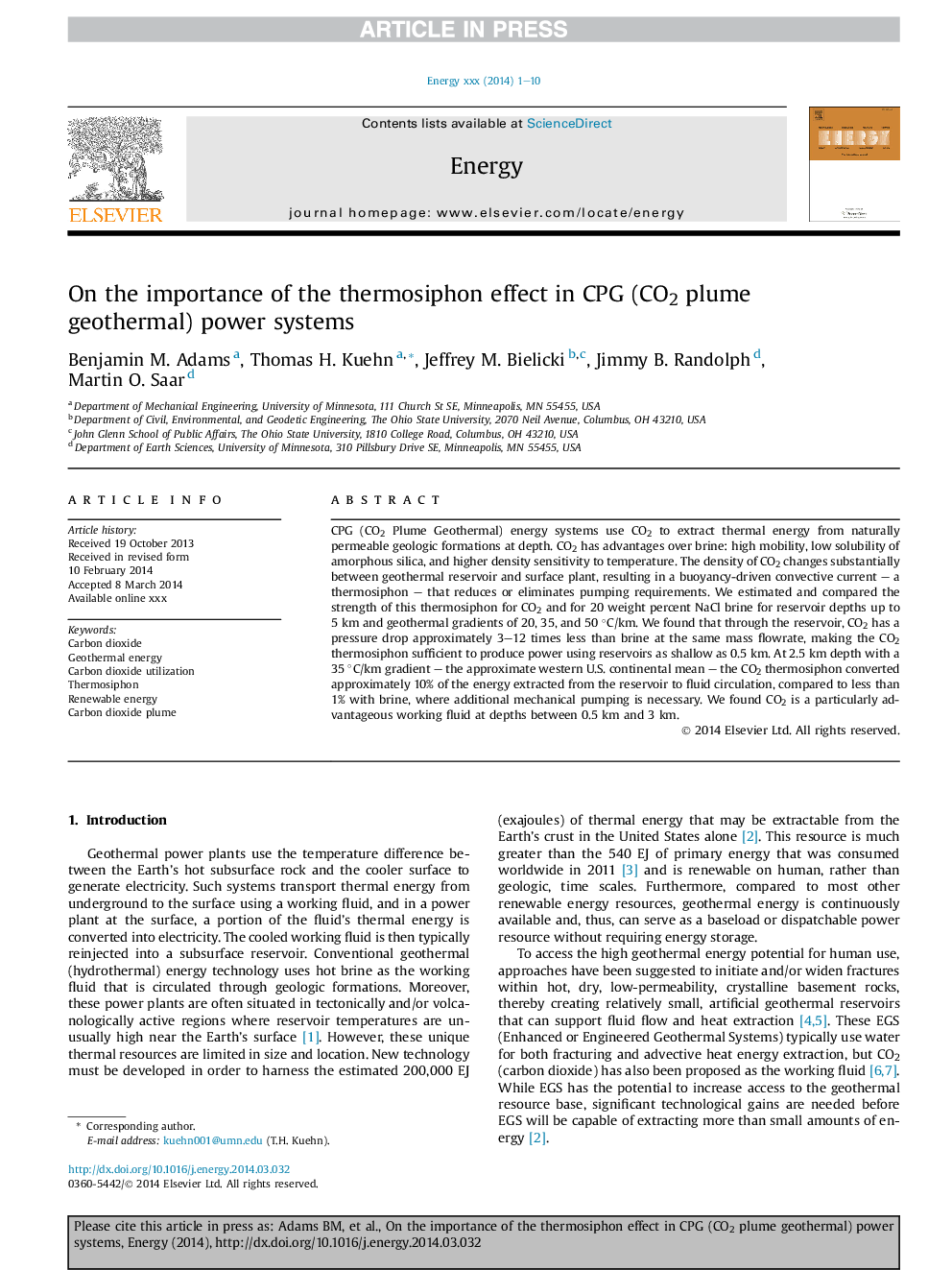| کد مقاله | کد نشریه | سال انتشار | مقاله انگلیسی | نسخه تمام متن |
|---|---|---|---|---|
| 8077715 | 1521477 | 2014 | 10 صفحه PDF | دانلود رایگان |
عنوان انگلیسی مقاله ISI
On the importance of the thermosiphon effect in CPG (CO2 plume geothermal) power systems
دانلود مقاله + سفارش ترجمه
دانلود مقاله ISI انگلیسی
رایگان برای ایرانیان
کلمات کلیدی
موضوعات مرتبط
مهندسی و علوم پایه
مهندسی انرژی
انرژی (عمومی)
پیش نمایش صفحه اول مقاله

چکیده انگلیسی
CPG (CO2 Plume Geothermal) energy systems use CO2 to extract thermal energy from naturally permeable geologic formations at depth. CO2 has advantages over brine: high mobility, low solubility of amorphous silica, and higher density sensitivity to temperature. The density of CO2 changes substantially between geothermal reservoir and surface plant, resulting in a buoyancy-driven convective current - a thermosiphon - that reduces or eliminates pumping requirements. We estimated and compared the strength of this thermosiphon for CO2 and for 20 weight percent NaCl brine for reservoir depths up to 5 km and geothermal gradients of 20, 35, and 50 °C/km. We found that through the reservoir, CO2 has a pressure drop approximately 3-12 times less than brine at the same mass flowrate, making the CO2 thermosiphon sufficient to produce power using reservoirs as shallow as 0.5 km. At 2.5 km depth with a 35 °C/km gradient - the approximate western U.S. continental mean - the CO2 thermosiphon converted approximately 10% of the energy extracted from the reservoir to fluid circulation, compared to less than 1% with brine, where additional mechanical pumping is necessary. We found CO2 is a particularly advantageous working fluid at depths between 0.5 km and 3 km.
ناشر
Database: Elsevier - ScienceDirect (ساینس دایرکت)
Journal: Energy - Volume 69, 1 May 2014, Pages 409-418
Journal: Energy - Volume 69, 1 May 2014, Pages 409-418
نویسندگان
Benjamin M. Adams, Thomas H. Kuehn, Jeffrey M. Bielicki, Jimmy B. Randolph, Martin O. Saar,